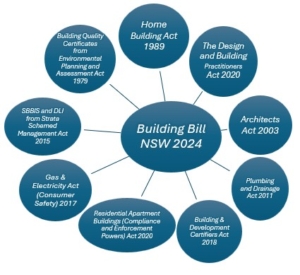Set-off what?
Making sense of ambiguous contracts
The primary concern for a developer and builder closing a development agreement is to reach a commercial deal on mutually agreeable terms. If you reach a deal, do the precise words in the contract really matter? What was the real deal struck if the words of the contract are ambiguous?
In Tomkins Commercial & Industrial Builders Pty Ltd v Pacific Diamond 88 Pty Ltd [2024] QSC 321, the Supreme Court of Queensland considered how to interpret a contract with terms that were clearly ambiguous, in a dispute about the Principal’s claim to liquidated damages and right to set-off.
Facts
The applicant (Tomkins) was a family owned and operated construction company. In December 2021, Tomkins entered into a contract as builder, with the respondent (Pacific Diamond) as principal, for construction works which was later varied by a deed of variation in August 2022.
Disputes arose between Tomkins and Pacific Diamond, which culminated in Pacific Diamond issuing three certified notices to Tomkins under the contract:
- a certificate for liquidated damages due and payable in the amount of $2.6 million;
- a payment certificate crediting to Tomkins $394,343 for work done, but setting off $2.6 million in liquidated damages, leaving a balance payable from Tomkins to Pacific Diamond of over $1.9 million; and
- a notice that Pacific Diamond intended to have recourse to bank guarantees provided by Tomkins under the contract as security.
Tomkins applied to the Court seeking declarations that Pacific Diamond was not entitled to set-off liquidated damages in the way it had sought to do, that notices issued by Pacific Diamond were invalid, and injunctions against Pacific Diamond preventing their recourse to the bank guarantees.
Ambiguity in the Contract
The questions before the Court required an interpretation of the clauses in the contract relating to the timing of the principal’s rights to liquidated damages, set-off and recourse to security.
When Tomkins and Pacific Diamond had originally negotiated the contract, the first drafts of the contract exchanged were an amended standard form AS4300–1995 contract. Notably, Tomkins did not agree to allow liquidated damages to be payable on demand, nor for liquidated damages to be deducted from certified amounts payable to Tomkins or from security, and deleted relevant clauses from this draft contract.
In the midst of negotiations, the parties then opted to switch and use the standard form AS4902–2000 contract as the basis of their negotiations. After further negotiations, subclause 37.2(b) was deleted from the standard form contract. The deleted subclause would usually have provided for certificates the principal could issue evidencing the assessment of retention and other moneys due to the principal from the contractor.
While subclause 37.2(b) was removed from the contract, references to subclause 37.2(b) remained. This resulted in ambiguity in the contract, particularly regarding whether Pacific Diamond had an immediate right to set-off for certified liquidated damages, or whether a claim for liquidated damages was only on account until the final payment claim at the conclusion of the contract.
Filling in the Missing Pieces
The Court found that the contract was ambiguous, and in this case was required to determine the actual legally binding agreement formed from the intention of the parties.
The Court uses an objective standard to determine the agreement that parties reach. This means the Court will assess the words and text exchanged between the parties through the eyes of a “reasonable businessperson” to determine the precise bargain of the parties.
Where there is an ambiguity in the contract, the Court will also consider relevant context (including prior negotiations) through the lens of a “reasonable businessperson” to determine the text, context and purpose of the contract.
The Court concluded that the correct and commercially sensible interpretation of the contract as amended by the removal of subclause 37.2(b) was that Pacific Diamond’s right to liquidated damages was not payable until after the final certificates had been issued, and that they could not set-off against security or against the certified payments due to Tomkins under the contract in the way they had attempted.
The Court also concluded that the balance of convenience favoured granting Tomkins the injunctions sought restraining Pacific Diamond from having recourse to the bank guarantees.
Consequently, the Court made the declarations sought by Tomkins that Pacific Diamond did not have a right to set-off liquidated damages against payments certified as due to Tomkins. Additionally, the Court ordered that Pacific Diamond could not have recourse to security on the basis of the notices it had issued, which the Court also found invalid under the contract and set aside.
Takeaway
Having ruled, the Court also recognised that Pacific Diamond’s claim to liquidated damages had not been extinguished entirely but simply delayed until a later time, with the expectation that Tomkins and Pacific Diamond might continue their dispute using the arbitration clauses in their contract.
In this case, it seems the commercial dispute between the parties had been exacerbated with a legal dispute arising from ambiguity in the drafting of the contractual terms of their agreement.
It is important when negotiating a contract, well before a commercial dispute arises, that the parties carefully and unambiguously decide on the proper contractual processes and risk allocation that will define their business relationship throughout a project. Doing so will help avoid unnecessary legal disputes when commercial resolutions are difficult to find.

